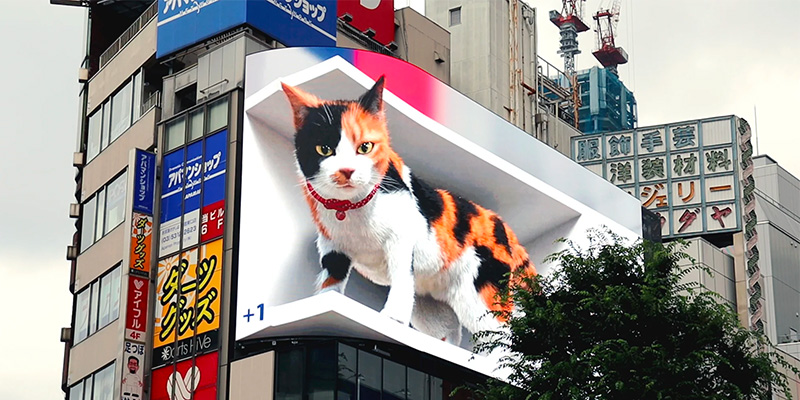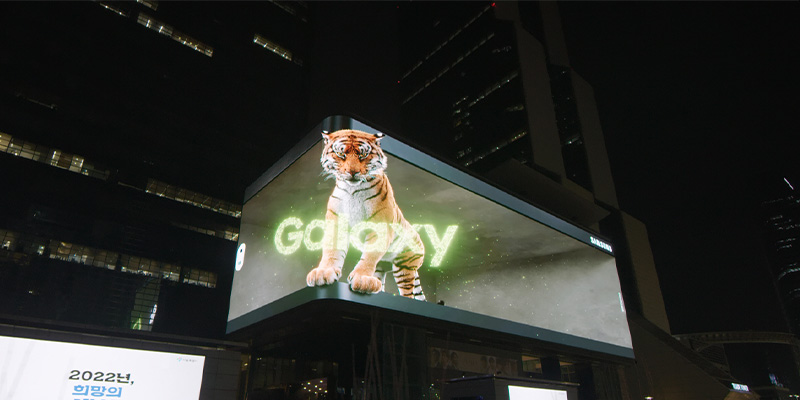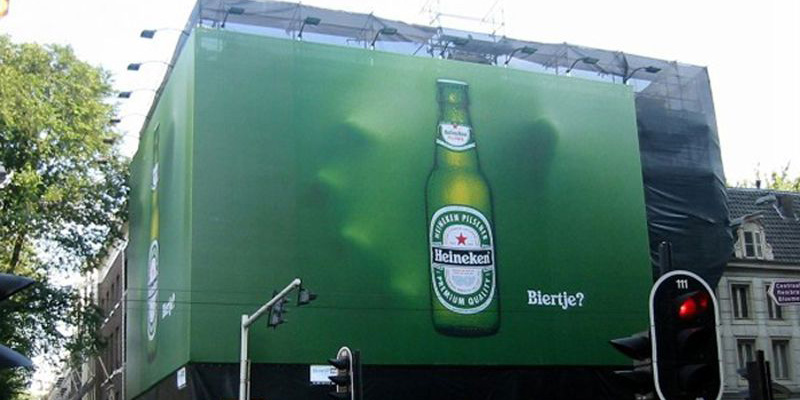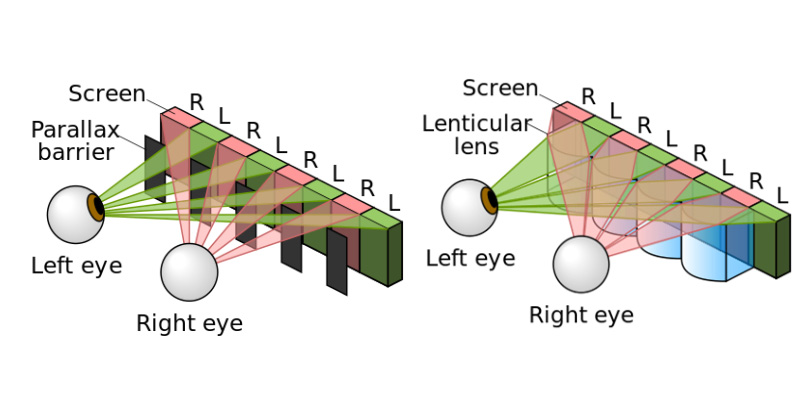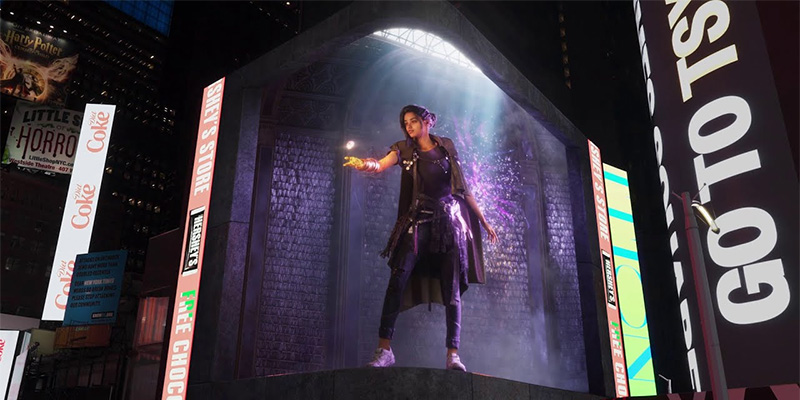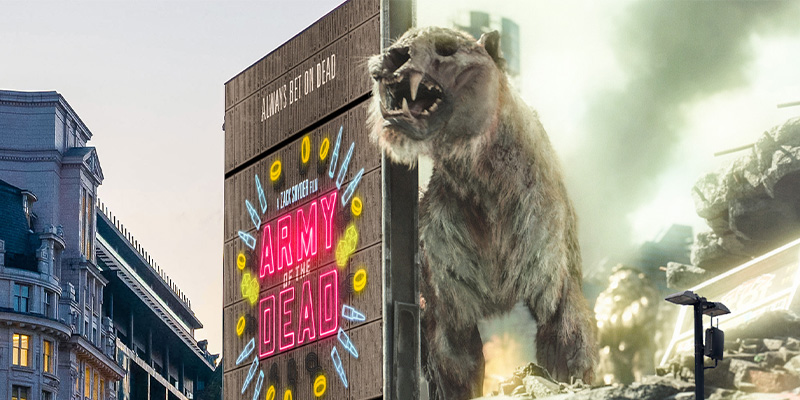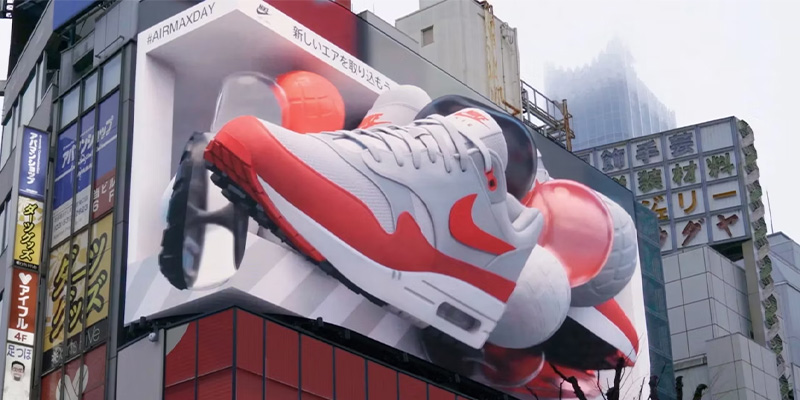How do 3D Billboards Work?
Content Index
- What are 3D Billboards?
- How do 3D Billboards work?
- How Does the Human Eye See the 3D World?
- Naked-eye 3D Holographic Projection ≠ Naked-eye 3D Video Effect
- Characteristics of 3D Digital Billboards
- 3D Billboard vs Traditional Advertising Screens
- Challenges of 3D Billboards
- Benefits of 3D Billboards
- Drawbacks of 3D Billboards
- 5 Popular Ads on 3D Billboards
Businesses and organizations are increasingly using three-dimensional (3D) billboards as a means of gaining attention and increasing their visibility.
For many years, billboards have been used for advertising, proving to be a strong tool for product reach and brand exposure. They provide a visual experience, making the busiest audience spare a glance, even if briefly.
When 3D technology is combined with billboard advertising, the outcome is more immersive. It can be exhibited across a variety of media, much like billboards. However, the marketing with these billboards is more successful than with traditional billboards.
But what exactly are 3D billboards and how do they work? We will go over the fundamentals and discuss their operation and the underlying technology architecture.
We’ll also cover some of the challenges, benefits, and drawbacks of utilizing 3D billboards for advertising projects.
Outdoor ads with moving images or text that produce the illusion of three dimensions are called 3D billboards. As an onlooker, it may seem that the contents of the billboard are emerging from the billboard.
Simply, these billboards create a three-dimensional image using digital technology and have a superior visual experience.
While some billboards have structural parts made of metal or alloy, others are composed of sturdy polymers. They give the impression that the advertisement’s subject is moving both inside and outside of the real screen.
3D billboards don’t go by a one-size-fits-all approach. The design concept ultimately determines the final material composition of a billboard. LED projection and lighting fixtures technology is incorporated into 3D billboards to enhance the 3D effect and provide more dynamic, attention-grabbing displays.
The technology behind 3D billboards involves a combination of elements designed to trick the viewer’s perception, resulting in a three-dimensional visual experience. 3D billboards utilize the following types of technology:
-
1). Parallax technology:
Parallax is a key component in creating the 3D effect on billboards. By using multiple layers of images or elements that move at different speeds, parallax creates a sense of depth as viewers move past the display. This technique mimics the way our eyes perceive depth in the real world, enhancing the realism of the 3D illusion.
-
2). Stereoscopic imaging:
Stereoscopic imaging involves presenting slightly different images to each eye, simulating humans’ natural binocular vision. In the context of 3D billboards, this can be achieved using specialized lenses or by employing auto stereoscopic displays that don’t require viewers to wear 3D glasses. The brain combines these two slightly offset images, creating the perception of depth!
-
3). Layered content:
The content displayed on 3D billboards is often created in layers, each representing a different aspect of the overall image. These layers can include foreground, middle-ground, and background elements. As these layers move independently or respond to viewer interaction, they contribute to the creation of a multidimensional effect.
-
4). LED display technology:
The use of high-quality LED technology is an important aspect in determining the success of 3D billboards. LEDs provide vibrant and dynamic visuals with the necessary brightness and color depth. LED displays can be arranged in various configurations, allowing for the precise control of individual pixels, and contributing to the creation of intricate and realistic 3D effects.
-
5). Motion sensors and interactivity:
Some 3D billboards incorporate motion sensors and interactive elements. These features enable the display to respond to the movements of passersby, creating a personalized and engaging experience. Interactive 3D billboards may change their content based on viewer proximity or gestures, enhancing the overall impact of the advertising message.
The fact that viewers can observe the 3D billboards with their naked eyes speaks a lot about the enhancements that have taken place in the 3D technological world. With no requirement for any specific equipment or 3D glasses, 3D billboards project a seamless and organic visual experience.
3D billboards rely on the way our brains analyze visual stimuli, particularly depth perception. This makes it possible for 3D billboards to project 3D images straight to viewers’ brains without the need for 3D glasses.
How, then, does our brain interpret images, and how can 3D billboards take advantage of this? Let’s discuss in detail.
The best visual processing device on the planet is the human brain. It gathers data from the external environment, such as binocular cues, from each eye and processes it to create a three-dimensional worldview.
Surprisingly, just 20% of binocular cues are composed of visual information. Other information sources, such as disparity and eye convergence, make up the remainder.
In technical terms, convergence, stereopsis, and shadow stereopsis are the three types of binocular cues. Our ability to perceive depth largely depends on stereopsis, which 3D billboards take full advantage of.
Stereopsis is the sense of depth that our brain creates from the two pictures that are taken by each eye. This is because each of our eyes receives visual information from a distinct angle, and they are typically 6.3 cm apart. The term Horizontal Disparity or Binocular Disparity refers to this discrepancy between the two images.
The part of the brain that skillfully combines these two disparate images into one is called the Visual Cortex. This helps in our understanding of the width, depth, length, and spacing between objects.
When you look at a 3D image without using any special glasses, it’s because of something called binocular parallax. This means that your eyes see slightly different images, and your brain combines them to make them look 3D.
Now, for showing naked-eye 3D images on a computer screen, the concept of raster is used. It helps create 3D effects on the screen you’re looking at.
Holograms (like the ones you see in science fiction movies), on the other hand, have sort of different ideas at play. The words “interference” and “infraction” are used to explain the mechanics of holograms.
Here’s the main difference: when you look at a 3D billboard, there are some rules. You need to be at a certain angle and distance to see it properly. But with 3D holograms, you can see them from any angle and distance.
Let’s break it down even more. Imagine you’re looking at a 3D billboard. It’s like seeing two pictures from two different angles, and your brain combines them into one picture that looks 3D. It’s a little trick your eyes play. Even though the billboard is just flat, your brain makes it seem like it has depth and space.
So, in simple terms, 3D billboards need you to be at a specific angle and distance, while 3D holograms don’t have these rules. They can create the illusion of depth without any special requirements. Cool, right?
So far, we know that billboards display incredible images with a range of depth. Let’s examine some of the characteristics of 3D billboards to learn more about them:
-
1). High resolution
An essential premium attribute of 3D LED billboards is high resolution. Very high-resolution images and films are usually displayed on a high-performing 3D LED panel. This is because display images of a higher quality correspond to greater display depth and detail. Like this, a billboard will draw in visitors more successfully if the display characteristics are advanced.
-
2). Adaptive brightness
Manufacturers of 3D-LED billboard screens engineer them to function at their best in all weather and lighting scenarios. They automatically adjust the brightness to provide the optimal viewing experience, whether it’s bright outside or dark indoors.
-
3). Versatility
In terms of design and innovation, 3D billboards offer more flexibility and variety than conventional 2D LED outdoor display screens. By including a variety of aspects in design, such as abstract shapes and forms and realistic artifacts and sculptures, an increase in audience involvement can be seen.
-
4). Increased visibility
One of the key selling aspects of 3D billboards is their high levels of visual impact and audience engagement. A video of a lion roaring through a 3D screen makes a more significant impression than a flat 2D representation of similar content. You have the flexibility to go beyond conventional constraints and create the strongest visual impact.
-
5). Brand differentiation
In the US alone, each day, more than 5,000 digital media branding advertisements are displayed. Utilizing the adaptability and greater impact of 3D LED billboards will help you stand out from the competition in the aggressive field of digital marketing and advertising.
LEDSINO is a leading provider of state-of-the-art LED display solutions. With their 3D LED Displays, LEDSINO products illustrate the advancements in 3D digital billboard technology. It offers advertisers a powerful platform to showcase their content in a visually stunning and engaging manner.
Among the most used outdoor advertising formats are traditional advertising screens, however, 3D billboards are also making their way into mainstream advertising. Both are great ways of getting your message across to your audiences. However, they are not the same in terms of presentation, visual impact, or degree of interaction.
-
1). Engagement
The degree of engagement that 3D Digital Out-of-Home (DOOH) billboards offer sets them apart from conventional advertising panels. While video material on a conventional screen perfectly gets the message across, 3D billboards usually offer a higher degree of engagement.
Advertisers can produce interactive material for their 3D billboards that lets viewers interact with the advertisement in actual time. For instance, viewers may be able to interact with the instance the subject of an advertisement moves or acts a certain way.
Billboard 3D graphics are also more impactful and memorable to viewers owing to their interactive power. This is especially true for billboards that use virtual or augmented reality, as these technologies enable more immersive interactions between the advertisement and its viewers.
-
2). Differential Advertising
Conventional advertising screens are usually flat and motionless, like LCD or LED displays. They are commonly found in places like public parks, transit hubs, and shopping malls, where they show a single image or video that repeats endlessly. Traditional screens are capable of efficiently communicating a message, but they don’t have the same three-dimensional impact as a 3D billboard.
3D digital billboards, on the other hand, aim to be captivating and immersive. They offer the advertisement with a three-dimensional element that gives it a more realistic and lively appearance. An additional benefit of 3D billboards is their ability to offer viewers a distinctive visual experience.
Considering the comparison, while 3D Billboards have a slight advantage over traditional screens, they also have certain disadvantages. Because of their intricate design, they are considerably more expensive to install than conventional advertising displays and need more upkeep.
Also, not all advertising campaigns are appropriate for 3D billboards. Some messages might be better served in a more conventional style.
3D billboards have the power to build a buzz for a company and leave a lasting impression on the viewer. Nevertheless, there are a few difficulties with 3D billboards, such as:
-
1). The cost of 3D billboard advertising
The cost of designing and installing 3D billboards can be high. Also, making an advertisement in 3D can be quite expensive. Most 3D billboards today are situated in posh cities, which makes it costly to buy a slot on the billboard.
Comparing this expense to brand marketing expenses, the amount adds up rapidly. The expense of using 3D billboards tends to prevent brands with small budgets from using them.
The price of a 3D billboard can range from $2000 to $8,000 for the design of the campaign to $10,000 to $50,000 for the actual billboard space. Remember that this price can vary depending on:
● Location of billboards
● Total volume of traffic in the region
● How long will the billboard (or hoarding) be available?
-
2). Technical skills
To make sure that the advertisement appears correctly from the designated viewing area, 3D DOOH involves technical knowledge and skills, including projection mapping and 3D model construction.
Additionally, each experience needs to be adjusted per the technical requirements of the different LED billboard displays.
-
3). Viewing area
The viewing area of a 3D billboard is constrained by the nature of illusions, as previously mentioned. There is an ideal viewing angle for 3D and other panoramic displays. From other perspectives, the subject will look disfigured which could reduce the advertisement’s overall impact.
Ordinary billboards are not the same as 3D billboards. The latter have an impact, are engaging, and immersive. They can foster an emotional bond and deliver your marketing messages without any interruptions. Here are a few advantages of the 3D billboards:
-
1). Simpler to convey the message and establish a period of respite.
3D billboards convey messages simply because they use a combination of dimension with motion interactively. 3D billboards are more effective than 2D billboards at conveying complex or abstract topics. They can also bring an element of intrigue, as well as a respite from the routine of everyday existence.
-
2). Improved brand identification and audience retention
The goal of 3D billboards is to draw people in and leave an impression that will stay with them even after they have viewed the advertisement.
-
3). Ecologically benign and energy-efficient
3D billboards use LED technology, which consumes less energy and generates less heat than traditional billboards. Additionally, they have a longer lifespan and require less maintenance, which reduces waste and pollution.
-
4). Boost the “WOW” factor in your marketing.
Adding a WOW element to a campaign can increase its chances of becoming more viral, generating a lot of excitement among the audience.
Due to its ability to display realistic images, dynamic effects, and interactive elements that create a lasting impression, 3D billboards are highly popular on social media, with users sharing the images and videos with their followers. Thus, through social media, companies can improve brand recognition and reputation in addition to the advertisement’s visibility and reach.
For instance, Google’s 3D billboard in Times Square gained a lot of popularity on Twitter as people expressed their intrigue at the display. The realistic and futuristic design of the Balenciaga and Fortnite sneaker ads on a 3D billboard New York, London, Tokyo, and Seoul drew a lot of attention and interaction on social media as well.
Like any other cutting-edge technology, 3D billboards have certain difficulties.
-
1). Maintenance
In general, LED screens for outdoor use are fragile, and 3D billboards are much more so. Like the parallax barrier, 3D billboards have more sensitive components.
Because of this, they require more upkeep than their flat 2D counterparts, because the physical components may need to be cleaned, repaired, or changed regularly. This may necessitate continuing funding and raise the total cost of the advertising campaign.
-
2). Universality limitations
Though they have many advanced capabilities and are quite versatile, 3D billboards may not be as useful in some scenarios. For example, the 3D effect may be less obvious and impact viewers less if the billboard is situated in a low-visibility region or is viewed from a distance.
-
3). Location Restrictions
Usually, outdoor 3D LED screens are very large. They might be visually obtrusive and take up more space, and there might not be many suitable places to install them. This geographical restriction may reduce the advertising campaign’s impact and reach while also making it more difficult for you to connect with your intended target market.
One thing is certain by now: 3D displays are more than just what you see! And here, we’ve included some of the best technologically generated ads!
-
1). Forespoken New York 3D Billboard
The incredible life-sized 3D billboard for the well-known video game Forespoken features Freya, a character from the game. It draws onlookers into the game due to its great attention to every detail and breathtaking realism.
-
2). Netflix 3D Billboard
To commemorate the release of the brand-new film Army of the Dead, Netflix installed a 3D digital billboard. This work of art uses 3D technology to provide dynamic graphics that engulf spectators in a remarkable cinematic experience. The realistic creature and fluid motion of the 3D Netflix Billboard serve as a reminder of the exciting content that Netflix has to offer.
-
3). Japan’s 3D Air Max Billboard for Nike
In 2014, Nike Japan celebrated its 35th anniversary with a creative campaign. The company made a 3D LED billboard advertisement with a Nike box that protrudes from the board outside Tokyo’s Shinjuku Station. Nike’s artistic directors succeeded in showcasing innovation, originality, and inspiration.
-
4). Coca-Cola billboard, “Taste the Feeling.”
A large-scale 3D recreation of a Coca-Cola bottle pouring into a glass creates a lifelike appearance on the Coca-Cola “Taste the Feeling” billboard. The billboard uses 3D technology to captivate spectators and convey the brand’s message about enjoying a refreshing Coca-Cola drink, anywhere and everywhere.
-
5). A 3D Vivo X80 billboard in Shenzhen, China
This 3D billboard in Shenzhen, China highlights the creative powers of the Vivo X80 smartphone. The billboard showcases an amazing display of high-resolution imagery where the phone dramatically emerges from a waterfall. You can also witness water splashing on the side, giving it a realistic look.
11. Final Takeaway
3D billboards are revolutionizing the advertising landscape by employing high-resolution screens and adaptive brightness, captivating viewers in manners that conventional billboards cannot achieve.
These state-of-the-art displays leverage sophisticated technologies such as parallax, stereoscopic imaging, layered content, LED display technology, and motion sensors to craft immersive and visually impactful imagery.
LEDSINO offers a variety of LED billboard options for your business’s digital advertising needs. Head to the online store today and explore some of the finished LED display options such as fixed LED display, rental LED display, and other featured products.
Energy Saving ES800-Series
![]() 3D LED Billboard Preferred;
3D LED Billboard Preferred;
![]() Energy Saving 30% Design;
Energy Saving 30% Design;
![]() Save 60% Installation Space;
Save 60% Installation Space;
![]() Ultralight Aluminum Profile Cabinet.
Ultralight Aluminum Profile Cabinet.
Energy Saving ES1000-Series
![]() Super Lightweight Design;
Super Lightweight Design;
![]() Sealed Aluminum Back Shell;
Sealed Aluminum Back Shell;
![]() Standard Size: 1000*1000mm;
Standard Size: 1000*1000mm;
![]() With 3 Years Warranty and 5% Spare Parts.
With 3 Years Warranty and 5% Spare Parts.
Contact
 0086-13421345624
0086-13421345624
 Building D, Hongfa Science Park,
Building D, Hongfa Science Park,
2035 Songbai Road, Shiyan, Bao’an District, Shenzhen, Guangdong, China.

